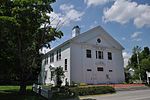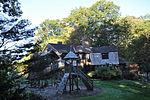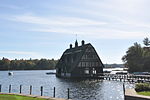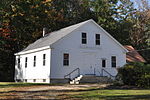Hansen's Annex
Greek Revival houses in New HampshireHistoric district contributing properties in New HampshireHouses completed in 1839Houses in Carroll County, New HampshireHouses on the National Register of Historic Places in New Hampshire ... and 4 more
NRHP infobox with nocatNational Register of Historic Places in Carroll County, New HampshireSandwich, New HampshireUse mdy dates from August 2023

Hansen's Annex is a historic house on Main Street in Center Sandwich, New Hampshire, United States. Built about 1839, it is one of a small number of Greek Revival buildings to survive, out of many that once graced the town. It has seen use as a single-family residence, tavern, and boarding house. It was listed on the National Register of Historic Places, and included in the Center Sandwich Historic District, in 1983.
Excerpt from the Wikipedia article Hansen's Annex (License: CC BY-SA 3.0, Authors, Images).Hansen's Annex
Main Street,
Geographical coordinates (GPS) Address Nearby Places Show on map
Geographical coordinates (GPS)
| Latitude | Longitude |
|---|---|
| N 43.807222222222 ° | E -71.439166666667 ° |
Address
Federated Church
Main Street
03227
New Hampshire, United States
Open on Google Maps









